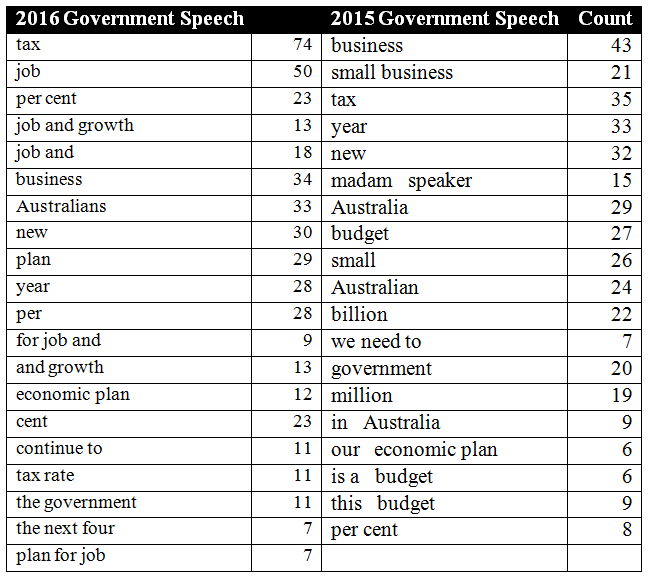NATSEM BUDGET 2016: What did the Treasurer say? (post 2016 budget)

Main Findings
The annual budget speech is a critical event in Australian politics. The Budget Speech and Budget Reply constitute the contrasting narratives from the Government and Opposition regarding where the country is, its challenges and opportunities, and how the major parties aim to confront those challenges. This year it takes on heightened significance for two reasons. Firstly, this was the first budget of the Turnbull government, which promised a new economic narrative in the wake of the leadership spill last September. The Budget forms the centrepiece of that new narrative. Secondly, we are quickly approaching an election and the budget announcement is the last significant act performed by the Government before the election will be called. For this reason, the Budget Speech and Reply this year will in many ways set the stage for the coming election campaign, which appears will be quite close. The Turnbull government has strived to differentiate itself from the Abbott era which never politically recovered from the highly unpopular 2014-2015 Budget. To determine the extent to which Scott Morrison’s 2016 Budget represents a break from Hockey’s 2015 Budget, we analysed the speeches given by Treasurer and Opposition and noted the most frequent words and phrases used.
In 2016, the key focus of the government is on tax changes, one of the benefits that will be directed at upper middle income earners, changes to business taxes, and taxes on superannuation in general compared with the more singular focus on businesses and the state of the budget in 2015.

Methodology
Data is collected from the Australian Parliament website. Pre-processing applied where stop-words (words that are frequently appearing but carrying highly context dependent meaning, e.g. articles such as “the”, “a”, “an”) are removed unless they appear in a phrase. The order of the list is determined by the number of times the phrases appears times the number of words in the phrases. Notes the list is based on word frequencies only, which may or may not reflect the importance of the topic in the speech.

